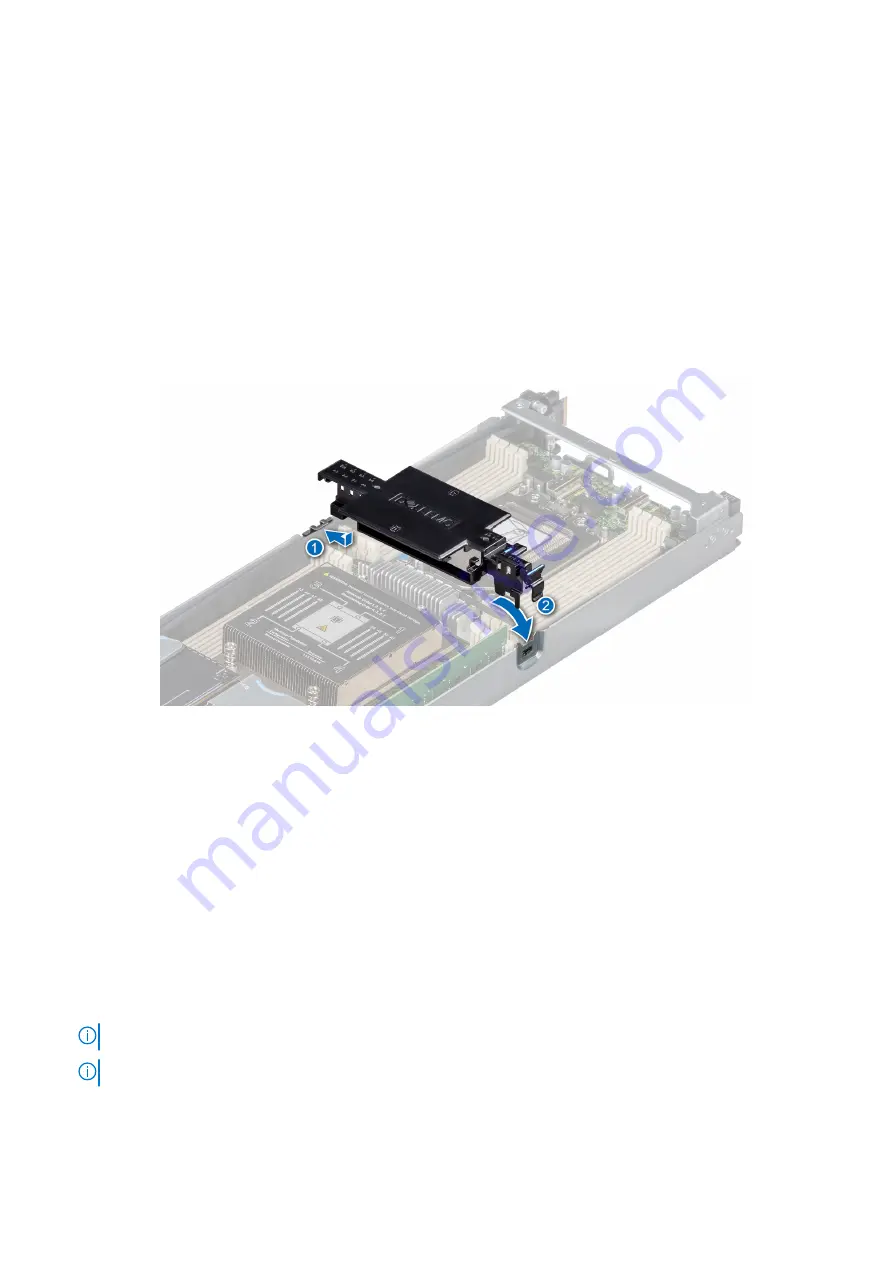
Air shroud
Removing the air shroud
Prerequisites
1. Follow the safety guidelines listed in
.
2. Follow the procedure listed in
Before working inside your system
3. If applicable, disconnect the PERC battery cable from the connector on the system board.
Steps
1. Press the blue clip and lift the air shroud.
2. Disengage the air shroud hook from the slot on the chassis and remove the air shroud.
Figure 15. Removing the air shroud
Next steps
1.
.
Installing the air shroud
Prerequisites
1. Follow the safety guidelines listed in
.
2. If applicable, connect the PERC battery cable to the connector on the system board.
Steps
1. Insert the hook on the air shroud into the slot on the chassis.
NOTE:
Ensure that the SATA cables are routed behind the air shroud clip.
NOTE:
Route the cable properly to prevent the cable from being pinched or crimped.
2. Lower the air shroud until the blue clip locks in place.
22
Installing and removing system components






























